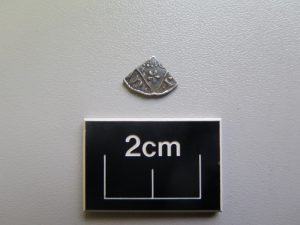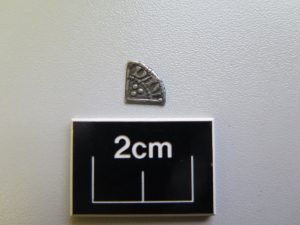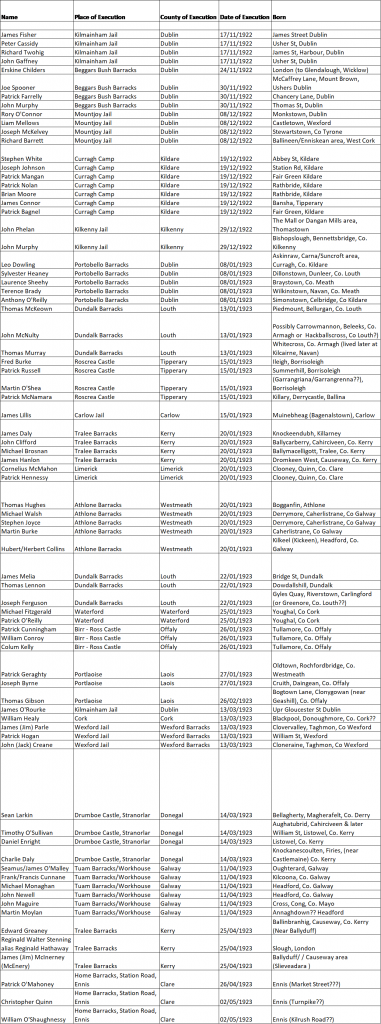This coin was discovered by Moore Group archaeologists excavating the site of the new Clarin College at Newford in Athenry a few years ago. During the course of archaeological monitoring of topsoil stripping for the new school we identified a site which comprised a series of pits and postholes of unknown purpose.
The investigation of the pits over a two-week period resulted in the recovery of a silver coin from one of the pits. This coin, a Henry III type II penny by the moneyer Davi, was minted between 1251 and 1254. The coin may have passed through the hands of the Anglo-Norman traders in the fledgling market town of Athenry. In the Mid-13th century the town was under the feudal lordship of Meiler de Bermingham, a Lieutenant of Richard de Burgo, 2nd Earl of Ulster and 3rd Baron of Connaught.
According to the Irish Walled Towns Network ‘The earliest remaining building in the town is the Castle, built at the ford by Meiler de Bermingham, probably shortly before 1240. This castle, one of the finest 13th century castles remaining in Ireland, now consists of a three-storied keep surrounded by a strong curtain-wall which had two corner-towers and a corner-buttress near the strongly fortified gate. Meiler de Bermingham also caused the Dominican Priory of SS. Peter and Paul to be erected in Athenry. The Priory was started in 1241 and finished in 1261’.
Beyond the town defences much of the surrounding land was controlled by a hostile native population led by the powerful O’Connors, Kings of Connacht. The precariousness of this Norman outpost is evidenced in the Annals that record two significant attacks on the town in 1249 and 1316. The date on the coin corresponds with these turbulent times.
The coin recovered is classic Irish type II coin with a cinquefoil to the right of the bust, a clear double line forming the triangle, the crown fleur is clearly joined to the band and there are no pellets in the obverse legend. In this case it has been quartered and the cinquefoil and part of the beard are visible on the obverse. The reverse quarter the ‘DAV’ part of the legend ‘DAV IOND eVe LIN (DAVI of Dublin)’. The obverse legend would have read ‘heNRI CVSR eX III (Henry III King)’. The coinage consisted only of pennies which were cut in halves and quarters to accommodate the needs of smaller change.





